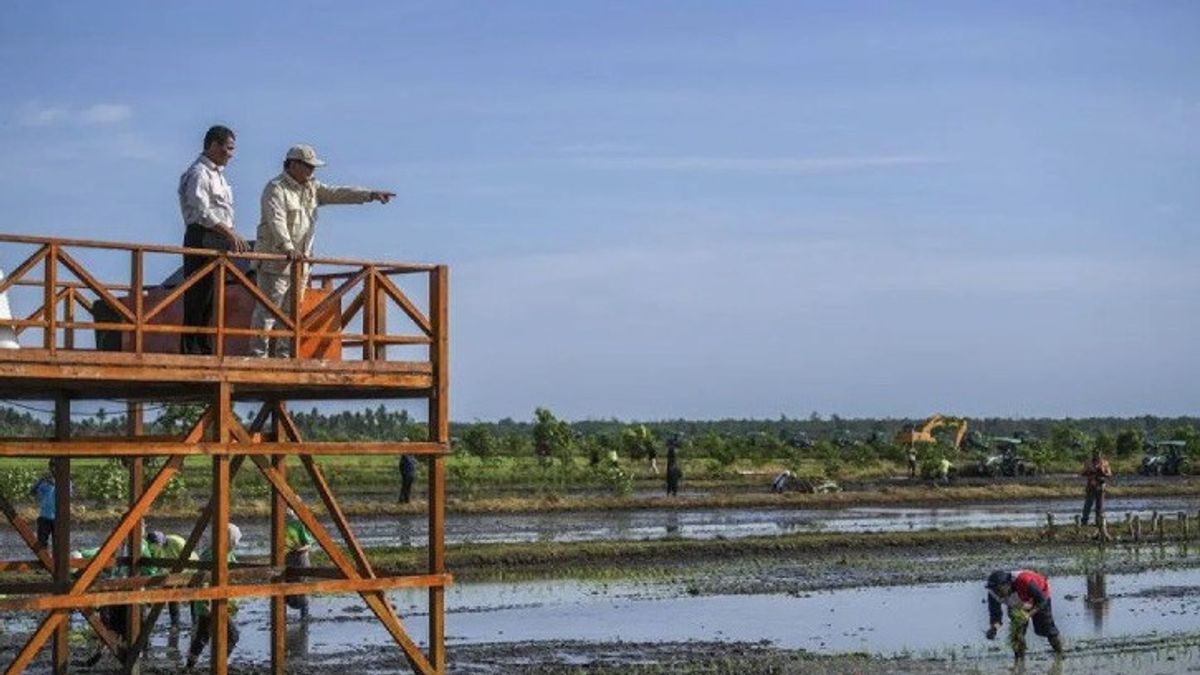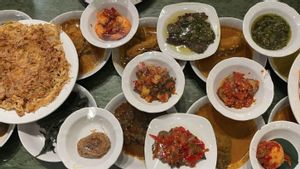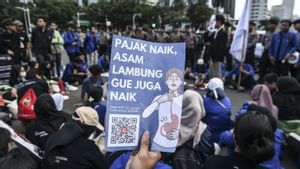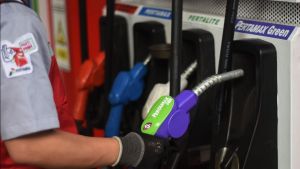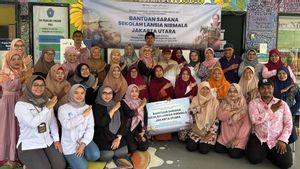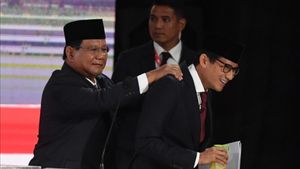JAKARTA Bright Institute senior economist, Awalil Rizky emphasized that food self-sufficiency is not solely a matter of the target amount of domestic food production, but also includes broader aspects such as the welfare of farmers and food sovereignty.
Since occupying the number one seat in Indonesia, President Prabowo Subianto has a big ambition to realize food self-sufficiency. The Minister of Defense for the 2019-2024 period even included food self-sufficiency as a priority program in Astacita's vision. Indonesia is targeted to achieve food self-sufficiency in 2028.
The Ministry of Agriculture (Kementan) and the Ministry of State-Owned Enterprises (BUMN) strengthen collaboration to achieve food self-sufficiency. In addition, the Ministry of Agriculture will also spur intensification and extensification of land.
Prabowo's government also promised to print up to three million hectares of rice fields, so that within a year the Ministry of Agriculture will print around 700,000 to 1 million hectares of land.
"We want to start from Merauke, Central Kalimantan, South Kalimantan, South Sumatra, West Kalimantan, Aceh, Jambi, and so on," said Minister of Agriculture (Mentan) Andi Amran Sulaiman.
However, Awalil Rizky reminded that food self-sufficiency is not limited to what Minister of Agriculture Andi Amran said. According to Awalil, food self-sufficiency is more than just a matter of production that exceeds consumption.
Food self-sufficiency has always been Indonesia's ambition. In fact, almost every president who takes office, they promote food self-sufficiency as a goal to be achieved. Indonesia itself had experienced food self-sufficiency through self-sufficiency in rice in 1984-1988 in the era of President Suharto.
In the Celebrating Indonesia: Fifty Years with Ford Foundation1953-2003, it is stated that there are at least two main reasons why Suharto boosted the food self-sufficiency project. First, hunger which expanded across the country in the 1960s. Second, due to the technological mechanics developed by the International Rice Research Institute (IRRI) from the University of Philippines.
Long story short, with various dynamics throughout the process, Suharto succeeded in realizing his ambition, namely achieving self-sufficiency in rice in 1984. At that time, Indonesia did not import rice. This achievement brought Suharto to an award from the Food and Agriculture Organization or FAO.
But the research entitled New Order Government Food Policy and the Fate of Farmers of Rice Producers in 1966-1988 by Hikmah Rafika explained, this achievement is actually illusionive or does not really solve food problems in Indonesia.
VOIR éGALEMENT:
That's because since self-sufficiency in food, Indonesia's rice production has actually decreased since 1985. As a result, Suharto failed to maintain food self-sufficiency so he chose to shift his focus.
"In 1988 the focus of government policy was no longer on land intensification and expansion, but rather diversification incorporating agriculture and technology," Hikmah wrote.
Now under the leadership of President Prabowo, Indonesia is targeting to achieve self-sufficiency in rice by 2027. In addition to meeting national food needs, the government also has a vision of making Indonesia a world food barn in 2029.
But to make that happen, Indonesia is faced with a tough challenge. Professor of UGM Agricultural Counseling and Communication, Prof. Subejo, SP, MP, Ph.D., said that achieving the target of self-sufficiency in food is not easy because it requires the right policy to support the program, considering that the agricultural sector as the supporter of food security actually faces many challenges.
"The target is certainly not easy with all the challenges that exist today," said Subejo, quoted by the UGM page.
The first challenge, according to Subejo, is the massive conversion of land or conversion of agricultural land into non-farm land. In the midst of the issue of climate change, land conversion is a serious threat in an effort to increase rice production as staple food for the people of Indonesia. This condition is ironic considering that the need for rice fields is predicted to continue to increase in line with the increase in population and demand for rice.
The second problem is related to post-harvests which causes prices to fall when the main harvest arrives. The classic problem that continues to repeat itself is because the logistics distribution system is not evenly distributed throughout Indonesia. Subejo thinks the urgent thing that needs to be done is the development of the food production and distribution information system, including horticulture, which involves multi-stakeholders so that it can be recorded in detail the amount and distribution of agricultural products and their distribution.
"With the information system, product distribution opportunities are more evenly distributed so that price stability can be guaranteed," he said. In addition, according to him, it is also necessary to encourage the processing industry which is beneficial when raw products are abundant so that they can be processed and preserved and still have adequate economic value.
On the other hand, Awalil Rizky highlighted the condition of Indonesia's hunger and nutritional adequacy which were neglected behind the government's ambition to achieve food self-sufficiency. According to Awalil, President Prabowo's food self-sufficiency ambition did not touch the problem.
"If we look at the Susenas data (National Socio-Economic Survey), only the population in the fourth and top five incomes meet the nutritional adequacy rate (AKG) of daily energy," Awil explained in a webinar event on Tuesday (5/7/2024).
"Or in other words, around 60 percent of Indonesia's population currently consumes food that does not meet nutritional adequacy. The condition in general is worse than 2019," he added.
For information, the spending quintile is the grouping of expenses into five equally large groups after ordering from the smallest to the largest expenses. The quintils consist of the first to fifth quintiles. The higher the quintile group shows higher spending.
Awalil also highlighted this hunger condition from the latest Global Hunger Index (GHI) data where Indonesia is below the world average, which is in the 77th position of 127 countries. This figure is even worse than Thailand, Vietnam, Malaysia, the Philippines, Cambodia, and Myanmar. Indonesia's hunger index is only better than Timor Leste and Laos.
The most important thing we need to pay attention to in this GHI index is the Prevention of Undernourishment or the Prevalence of Food Consumption Insufficiency taken from BPS data. This prevalence in 2023 reached 8.53 percent, worse than 2017 2021, and did not reach the target of RPJMN at 5.2 percent," Awalil added.
Furthermore, Awalil explained that in looking at data or prevalence of Insufficiency in Food Consumption in Indonesia, this prevalence value gap is still very high between provinces and districts or cities.
It is recorded that there are 291 regencies and cities whose prevalence value is worse than the national value, of which 291 is more than half the number of regencies and cities in Indonesia, totaling 514.
To be able to effectively touch the problem, Awalil assessed that the problem of self-sufficiency in food should not only be related to the target number of domestic food production, but also includes wider aspects such as the welfare of farmers and food sovereignty.
Food self-sufficiency is not only a matter of production exceeding consumption, but must be expanded regarding farmers' welfare, everyone's access to food adequacy, and food sovereignty, Awil explained.
This food sovereignty, continued Awalil, is measured by how much we can get the food prices that the people want, and how much the products of this food are controlled by the state or society directly.
"Not from corporate control, as we see in the implementation offood estate which has a separate interest in the interests of the community as food consumers. This means that it is not sovereign," said Awil.
Bright Institute Research Director, Muhammad Andri Perdana, added that the food self-sufficiency that the government wants to achieve should pay attention to the welfare of small farmers.
"About 50 percent of our poor families are farmers. Our farmers' families are ironic at this time the most food-prone families," said Andri.
"Therefore, food self-sufficiency missions should not rule out the welfare of small farmers above the welfare of companies that receive a budget for program implementation," he concluded.
The English, Chinese, Japanese, Arabic, and French versions are automatically generated by the AI. So there may still be inaccuracies in translating, please always see Indonesian as our main language. (system supported by DigitalSiber.id)
